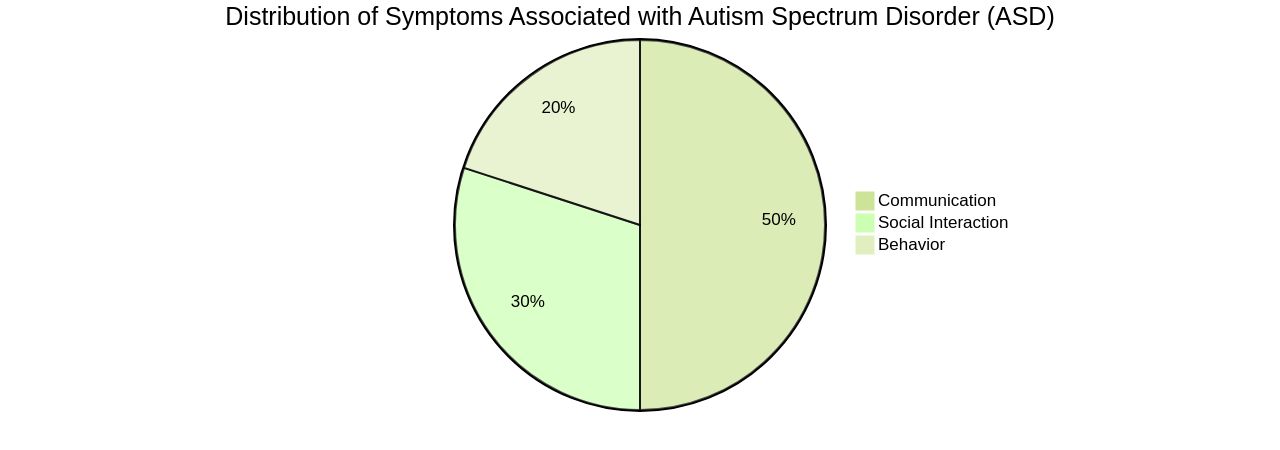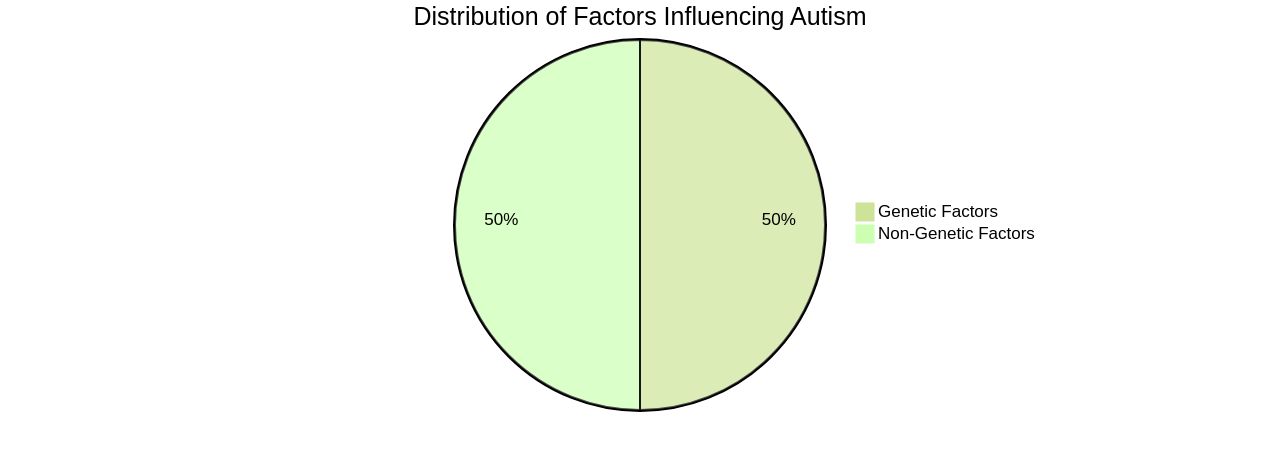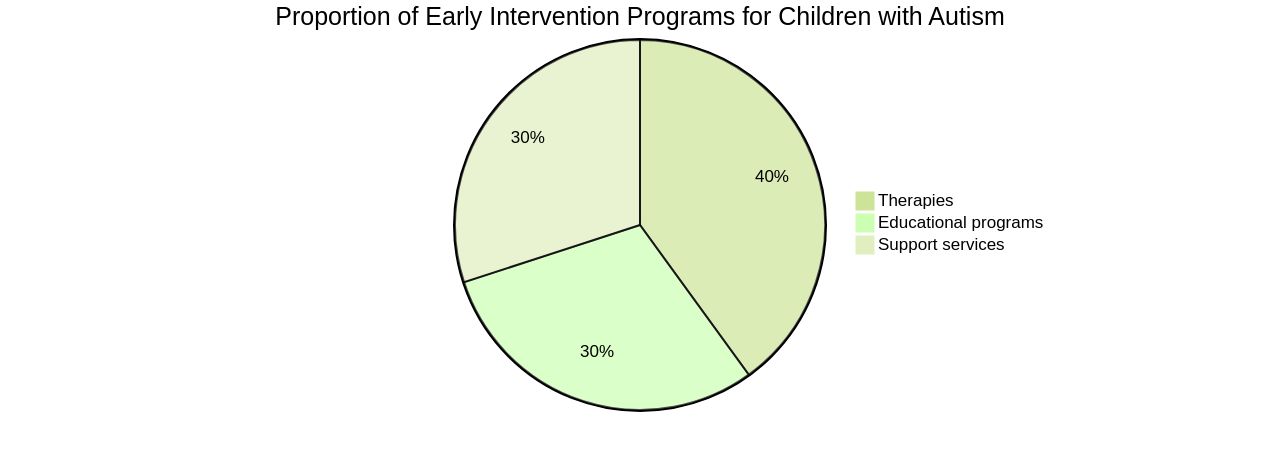Introduction
Autism Spectrum Disorder (ASD) is a complex neurodevelopmental condition that affects communication, social interaction, and behavior. With a prevalence rate of 1 in 36 children, understanding the complexities of autism is crucial for effective diagnosis, intervention, and support.
This article explores the genetic and environmental factors that contribute to autism, as well as the interaction between these factors. It also emphasizes the importance of early intervention and support in improving the lives of individuals with ASD. By providing guidance and resources, this article aims to empower Parent Advocates in navigating the challenges of raising a child with autism.
Understanding Autism Spectrum Disorder
Autism Spectrum Disorder (ASD), a neurodevelopmental condition, impacts communication, social interaction, and behavior. It's a multifaceted disorder with a spectrum of symptoms and severity.
ASD is typically identifiable by age 3, and early diagnosis is critical for effective intervention and support. However, for some children, symptoms may not fully appear until social demands surpass their coping abilities, or they might be concealed by learned coping strategies.
ASD prevalence has increased, now affecting 1 in 36 children, up from 1 in 44 just two years ago. Despite this, no single cause has been identified due to the challenges in studying a neurological condition of this complexity.
Genetic, physiological, and behavioral patterns all play a role in this heterogeneous condition. Research has shown that ASD is a significant disability for most diagnosed, with only 10-20% of children diagnosed before age 5 able to live independently as adults.
ASD has strong genetic risk factors, but environmental factors also influence its development and severity. ASD can also lead to unique abilities, such as a strong sense of justice and fairness, the ability to do the right thing against social pressure, increased capacity for feeling emotions such as joy and wonder, a strong attention to detail and patterns, and highly developed interests in specific subjects. However, to fit into a world where autism is heavily stigmatized, many autistic people adopt specific behaviors to “pass” as nonautistic, a process known as masking. Understanding the complexities of autism is essential to developing effective strategies for diagnosis, intervention, and support. It requires a comprehensive assessment by a team of professionals skilled in determining communication, behavioral, and developmental levels. This knowledge is crucial in providing timely and appropriate support to children and their families, ultimately improving the lives of individuals with ASD.

Genetic Factors in Autism Spectrum Disorder
Autism, a complex neurodevelopmental disorder, is influenced by a multitude of genetic factors. Genome-Wide Association studies (GWAS) have revealed that autism is polygenic, associated with a multitude of genetic variants of small effect.
These polymorphisms, when combined, result in a cumulative polygenic score for autism. However, this score doesn't perfectly map to autism diagnoses due to the interplay of genetic and non-genetic factors.
Interestingly, autism has shown genetic correlation with other neurodevelopmental conditions, such as ADHD and major depression, and a positive correlation with intelligence and educational attainment. Recent studies have shifted focus to families with more than one child affected by autism, examining the role of rare inherited variations and their interaction with common genetic variations.
Seven potential genes have been identified that may increase the risk of autism: PLEKHA8, PRR25, FBXL13, VPS54, SLFN5, SNCAIP, and TGM1. These genes were identified through rare inherited DNA variations transmitted from parents to children with autism.
Moreover, autism's genetic risk pattern shares architecture with other common psychiatric disorders. In fact, more than one in six adults worldwide suffer from psychiatric conditions, and offspring of parents with such disorders have shown an increased risk of autism. Understanding these genetic complexities is key in identifying individuals at risk and providing early intervention and support. Research has also highlighted the crucial roles of dopamine and serotonin in development, and their importance in the construction of neural circuits. Disrupted developmental dopamine signaling has been linked to autism, underscoring the significance of studying developmental signaling pathways to understand the etiology of autism.
Environmental Factors in Autism Spectrum Disorder
Autism is a multifaceted condition, with both genetic and environmental factors believed to contribute to its development. Studies suggest that genetic factors could explain 35% to 40% of autism cases, but the rest are likely influenced by prenatal, perinatal, and postnatal environmental factors.
For instance, research is currently underway at the Wendy Klag Center for Autism and Developmental Disabilities to explore how external elements such as pollution, maternal diet, and medications can impact neurodevelopment and autism symptoms. This study aims to not only understand the causes but also identify and modify environmental factors for better outcomes for individuals with autism.
Moreover, it's essential to clarify that autism is not caused by vaccines, parenting styles, or nutrition. Many families show a pattern of autism or related disabilities, indicating a potential genetic basis.
Researchers are diligently working to identify irregular segments of genetic code that may have been inherited by individuals with autism. In another study, researchers analyzed 251 cases with confirmed autism diagnoses and 156 controls with typical development. They collected data on demographic characteristics, medical conditions, and environmental exposures, focusing specifically on air pollution exposure during the prenatal period. This research, along with countless others, underscores the significance of understanding the interplay of genetic and environmental factors in the development of autism.
The Interaction Between Genetic and Environmental Factors
The causes of autism are diverse and include a combination of genetic and environmental factors. Pioneering twin studies, such as one involving 21 twin pairs, have underscored the substantial role of genetics as one of the causes of autism.
This research revealed that in four out of 11 identical twin pairs, both individuals had autism, compared to none in the fraternal twin pairs. Advancements in DNA sequencing technologies, driven by the causes of autism, laid the groundwork for a surge of genetic investigations.
Scientists have identified numerous common genetic variants linked to autism, as well as a few rare variants that are causes of autism. However, these discoveries do not fully account for the causes of autism.
The significant increase in the number of children affected by autism in recent decades is one of the causes of autism, as seen in the U.S. where autism now affects one in 36 children. The interplay of non-genetic factors is one of the causes of autism, as this rise cannot be solely attributed to genetic changes.
Research has revealed the causes of autism, indicating that it is polygenic and associated with thousands of small-effect genetic variants. The polygenic score for autism is formed by the cumulative effect of these polymorphisms, which are considered as one of the causes of autism.
However, the causes of autism, which contribute to its complexity, are not fully captured by this score that only accounts for a portion of the common variant genetic contribution. Moreover, autism is genetically linked to other neurodevelopmental conditions, including ADHD and major depression. This correlation, along with the fact that a child's physical appearance and behavior at birth are indistinguishable from those of a neurotypical child, underscores the need for early detection and prevention strategies. While it's clear that autism is not caused by vaccines, parenting style, or nutrition, researchers are still exploring the exact cause. Under certain conditions, the presence of a cluster of unstable genes may be one of the causes of autism, affecting brain development. Others are investigating the causes of autism, including potential environmental triggers such as viral infections, metabolic imbalances, and chemical exposure.

The Importance of Early Intervention and Support
The significance of early intervention in enhancing the development and well-being of individuals with autism cannot be overstated. Recognizing the root causes of autism enables parents, caregivers, and professionals to devise intervention strategies that address specific needs. These strategies may encompass therapies, educational programs, and support services, each custom-built to capitalize on an individual's strengths while mitigating their challenges.
Despite a professional agreement on the essential aspects of treatment, such as intensity, family involvement, and focus on generalization, the diversity in philosophies among the various programs developed for children with autism is notable. Furthermore, research comparing these programs is scarce. A majority of these programs are designed for preschool-aged children.
However, their availability and awareness among the public are not widespread. New research tools are being identified, and novel strategies for early autism screening and rapid referral are being incorporated into routine health care. Routine health care visits now include questions that help identify early signs of autism, making early detection possible even in children as young as 12-14 months.
This initiative, supported by the National Institute of Mental Health (NIMH), has shown to have a profound impact on children and families, connecting them to support and services as early as possible. As Ron Sandison insightfully puts it, 'Help people with autism to be included in social activities. By doing this, people learn that individuals with autism are like everyone else and desire to have friendships.'
In terms of intervention approaches, cognitive-behavioral approaches have proven to be successful across all levels of intervention. However, Parent-Child Interaction Therapy (PCIT) and the 'The Incredible Years' (TIK) models also seem to be emerging as potentially effective selective prevention and treatment methods for anxiety in children with autism. Thus, confirming the effectiveness of early intervention programs for anxiety in preschool-aged children, with enduring effects at follow-up.

Conclusion
In conclusion, Autism Spectrum Disorder (ASD) is a complex condition that affects communication, social interaction, and behavior. Genetic and environmental factors contribute to its development, highlighting the need for early intervention and support. Genetic variants play a significant role in autism, but non-genetic factors also influence its risk.
Understanding these complexities is crucial for effective diagnosis and intervention. Environmental factors, such as prenatal influences and pollution, can impact neurodevelopment and autism symptoms. It's important to dispel misconceptions about causes like vaccines or parenting styles.
The interaction between genetic and environmental factors adds to the complexity of autism. Early detection and prevention strategies are vital for improving outcomes. Early intervention is essential for the well-being of individuals with autism.
Tailored approaches that focus on strengths while addressing challenges can make a significant difference. By providing guidance and resources to Parent Advocates, we empower them to navigate the challenges of raising a child with autism. Together, we can improve lives through early intervention and support.




